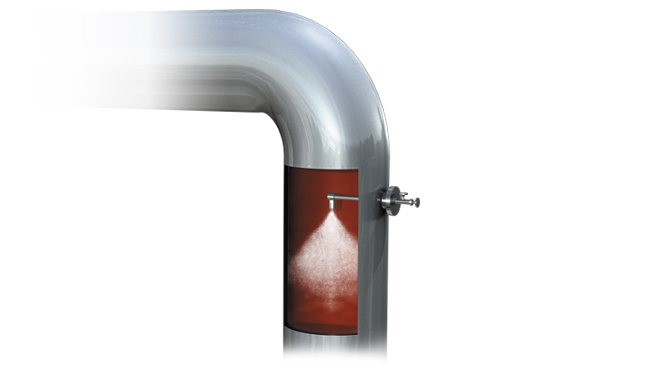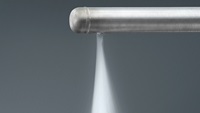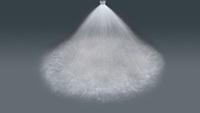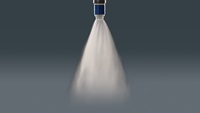Hydrotreater

1. Water Wash
Problem: Scrub chlorides from the effluent vapor. Most installations use quills with no spray nozzles or conventional spray nozzles. Quills and conventional nozzles do not provide adequate chloride scrubbing. Most of the water ends up on the walls of the pipes and enters the REAC in an asymmetrical distribution.
Best practice: To maximize scrubbing potential, wash water injection should maximize the surface area of water injected. This allows for better contact with the chlorides and for more uniform distribution of the wash water through the piping system and REAC inlets. The newest technology uses a slipstream of makeup hydrogen as a secondary fluid in a two-fluid spray nozzle. The FloMax® H nozzle has been designed specifically for this application and outperforms quills and spray nozzle in chloride scrubbing efficiency.
3 options for water wash
Quill
Quills used for water wash in hydroprocessing units typically have rectangular orifices that don’t form discrete droplets. This results in minimal surface area for chloride scrubbing. In addition, the wash water isn’t distributed uniformly and salt downstream of the injection point may not be dissolved. In some cases, this maldistribution of wash water may encourage salt formation.
Hydraulic Spray Nozzle
Full cone and hollow cone spray nozzles form discrete droplets. However, the droplets are too large to navigate the tee and bends in piping systems in use prior to the introduction of REACs. In addition, large droplets tend to form a water film in the piping system and are susceptible to maldistribution and reduced salt dissolution.
FloMax® H - BEST PRACTICE
Two-fluid FloMax® H spray nozzles have been engineered to optimize chloride scrubbing in water wash systems in hydroprocessing units. A slipstream of makeup hydrogen is used for atomization. The nozzle produces much smaller droplets that saturate more of the vapor while maintaining 20-25% free water. The result is more uniform distribution of the droplets for chloride scrubbing in the piping, REAC inlets and exchanger tubes.

